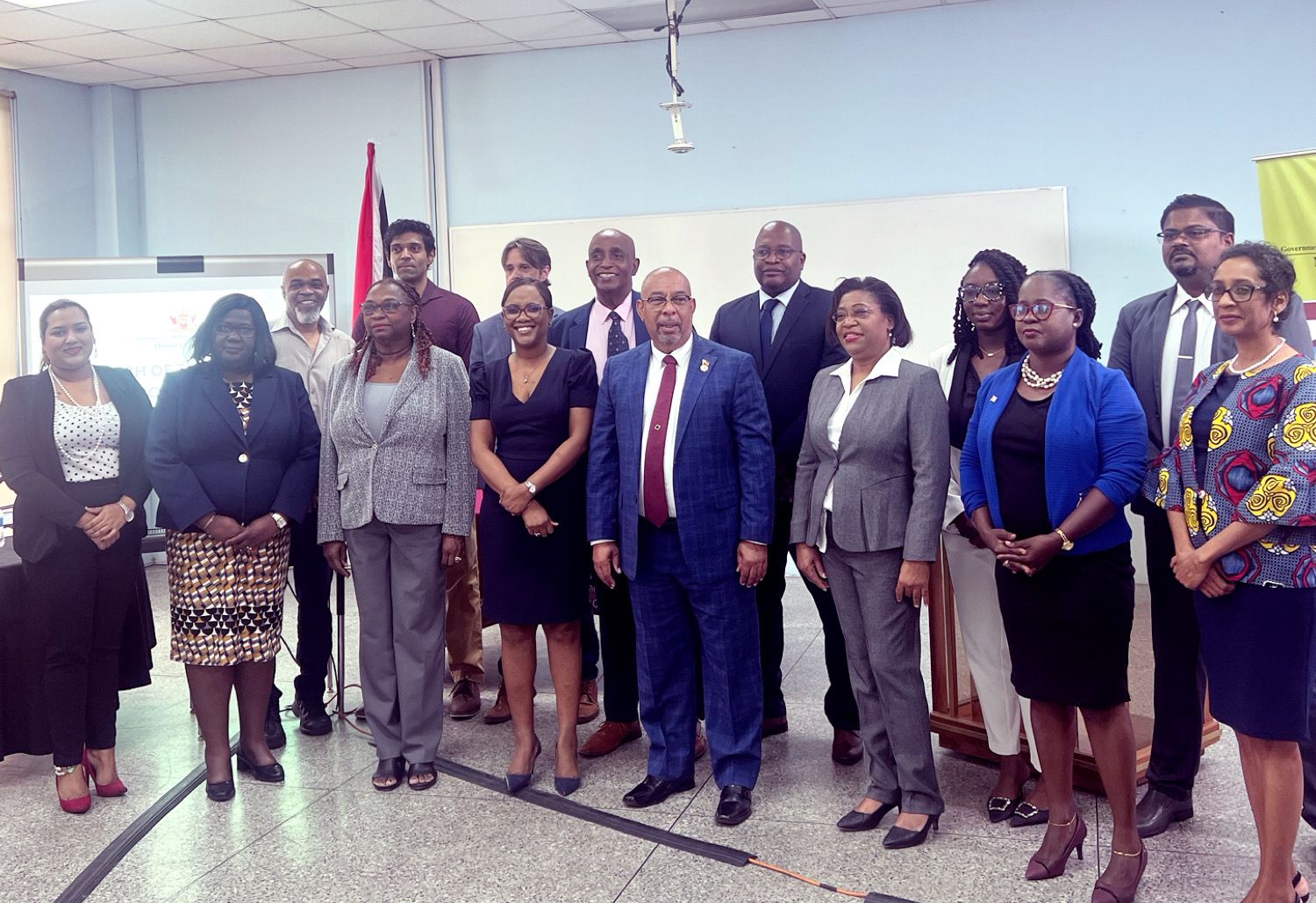The Cipriani College of Labour and Co-operative Studies recently hosted its HSSE Conference under the theme Safeguarding Lives and Livelihood: Challenges in Health, Safety and Security. Perhaps with systems thinking in mind, the two major conference themes: 1. Technological Transformation and Safety Synergy and 2. Disaster Management & Criminological Strategies in Security took into consideration that the international system is marked by complexity.
As small open economies, Caribbean countries are vulnerable to manmade and natural disruptions over which we have little control. COVID-19 certainly demonstrated this. It is against this backdrop the Human Resource Management Association of T&T (HRMATT) focused its participation at the conference on building resilience and adapting to change for organisational social and economic development.
HRMATT president Cavelle Joseph-St Omer, VP Kimberly Chan, advocacy officer Cindy Wilson and moderator Melissa Bridgewater provided a critical review of Resilient Workplaces: Adapting to Change.
Change is inevitable in the workplace, and the ability to adapt is crucial for success and growth. Adaptability and resilience in the workplace are key skills that enable individuals and organisations to navigate shifting dynamics and embrace new opportunities. The panellists explored the importance of adaptability, ways to adapt to workplace change, and how to effectively build resilience.
Buildings, as part of the infrastructure system, have to cope with changes over their lifespan. These include: the need to accommodate changing needs of owners and users; responding to market conditions, legislative requirements and the challenges from climate change and other environmental factors such as flooding or heat risks. When we factor in small Caribbean territories like ours, constraints such as land availability, this is also a driver for adaptability, since it impacts decision-making around demolishing and re-building new structures which is sometimes not a feasible alternative.
The ability to adapt to change and bounce back from adversity is essential for sustained success. Resilience in the workplace refers to the capacity to not only withstand, but recover from setbacks, adversity, and stressors while maintaining productivity and well-being. It involves not only individual resilience but organisational resilience, which encompasses the ability of an entire company to adapt and thrive in the face of challenges. In modern workplaces, where change is constant and unpredictable, resilience is more than just a desirable trait – it’s a strategic imperative.
One of the first steps organisations should take towards building resilience in modern workplaces is to recognise and embrace change as a natural and inevitable part of the business environment. Whether it’s technological advancements, market shifts, or organisational restructuring, change is a constant force that requires adaptation. Resilient workplaces foster a culture of flexibility, agility, and open-mindedness, empowering employees to embrace change as an opportunity for growth and innovation rather than a threat to stability and individual livelihoods.
Key to building resilience and adaptability is the cultivation of a growth mindset — an attitude that views challenges as opportunities for learning and development. Leaders play a crucial role in promoting a growth mindset by providing support, encouragement, and recognition for efforts and achievements, thereby fostering a culture of resilience and empowerment.
For organisations to adapt, resilience in the workplace must be seen as not just about individual capabilities, but about fostering strong relationships and networks that enable employees to navigate challenges together. Modern workplaces thrive on collaboration, teamwork, and mutual support, as individuals draw strength and resilience from their connections with colleagues, mentors, peers and associations. Building trust, communication, and camaraderie within teams and across the organisation enhances resilience by creating a sense of belonging and collective purpose.
Resilient workplaces are characterised by a culture of innovation, creativity, and agility, where employees are encouraged to experiment, take risks, and think outside the box. Where mistakes are treated as lessons learnt. In the face of challenges and uncertainties, innovative solutions and creative approaches can offer pathways to resilience and success. Leaders can foster innovation by creating a safe space for experimentation, rewarding entrepreneurial thinking, and championing a culture of curiosity and exploration.
And finally but most importantly, in the midst of all the pressures and demands placed on the modern workplace, it’s essential to prioritise employee health, well-being and self-care as foundational elements of resilience. Resilient workplaces recognise the importance of work-life balance, stress management, and mental health support in fostering resilience and preventing burnout. Providing resources, programmes, and policies that promote physical, emotional, and psychological well-being demonstrates a commitment to employee resilience and creates a supportive work environment where individuals can thrive and succeed. Remember, the organisation can only go as far as the people can go.
In conclusion, HRMATT considered building resilience in modern workplaces an essential conversation for an HSSE conference. Participants were left with little nuggets that hopefully left them feeling empowered, motivated, and equipped to face whatever challenges come their way. In an increasingly volatile and uncertain world, resilience is not just a desirable trait — it’s a competitive advantage and we know it!





